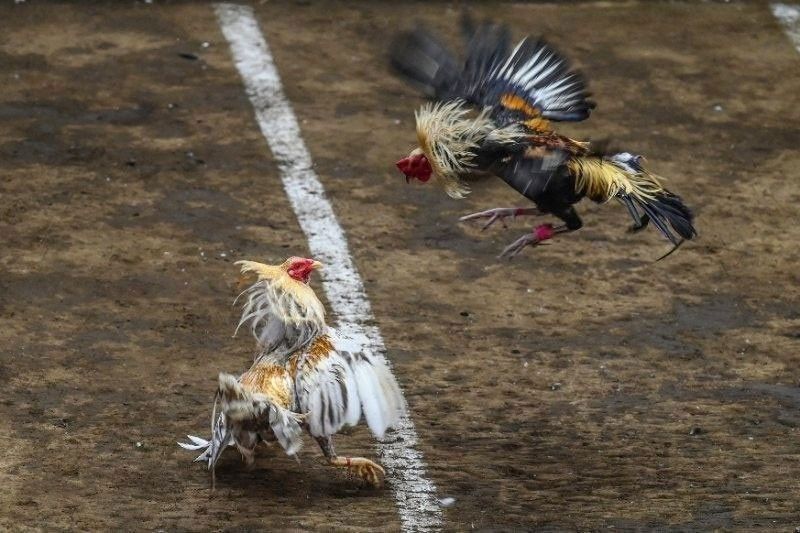Table of Contents
Sabong, also known as cockfighting, has a storied history that stretches back centuries. Rooted in tradition and cultural significance, it has evolved over time, adapting to modern technology while maintaining its core essence. This article delves into the rich history of the sport, tracing its origins, cultural impact, and transformation into the realm of online casinos.

Origins of Sabong: Historical and Cultural Significance
The sport has deep historical roots, with evidence of cockfighting dating back to ancient civilizations. Archaeological findings suggest that it was popular in ancient Persia, Greece, Rome, and India. Cockfighting was seen as both entertainment and a test of skill and bravery. It was introduced to Southeast Asia by Spanish colonizers in the 16th century, where it quickly became ingrained in local cultures, particularly in the Philippines.
In the Philippines, cockfighting became more than just a sport; it evolved into a cultural tradition. The game is often associated with social gatherings, celebrations, and even religious festivals. Roosters, or gamecocks, are bred and trained for their strength, agility, and fighting prowess, reflecting the importance of the sport within the community. Families often pass down the knowledge of breeding and training roosters through generations, showcasing the deep-rooted connection to the sport.
Sabong in Different Cultures: Variations and Practices Worldwide
While sabong is most closely associated with the Philippines, it is practiced in various forms around the world. Each culture brings its own unique flavor to the sport:
- Philippines: The sport is highly regulated, with official arenas and specific rules governing the matches. Sabong is deeply embedded in Filipino culture, often linked to local festivals and community events. The significance of sabong in Filipino society is evident in the presence of sabong arenas in both urban and rural areas.
- Thailand: Known as “kaidaeng,” Thai cockfighting emphasizes breeding and training, with a focus on stamina and fighting techniques. The sport is both a traditional pastime and a modern betting phenomenon. In Thailand, the cultural aspects of sabong are highlighted during major festivals where matches are held as part of the celebrations.
- Mexico: Cockfighting, or “peleas de gallos,” has a long history in Mexican culture. Matches are often part of larger cultural festivals, reflecting the sport’s significance in Mexican society. The vibrant atmosphere of Mexican cockfighting events includes music, dance, and traditional food, creating a festive environment.
- India: In regions like Andhra Pradesh and Tamil Nadu, cockfighting is a traditional sport that plays a role in local celebrations and festivals. The sport is closely tied to agricultural communities, where it is seen as a symbol of pride and strength.
Transition to Online Platforms: How Technology is Changing the Game
With the advent of the internet and digital technology, sabong has found a new home online. Online sabong platforms offer a modern twist on the traditional sport, bringing the excitement of the cockfighting arena to a global audience. This transition has several key benefits:
- Accessibility: Fans can watch live matches and place bets from anywhere in the world, making sabong more accessible than ever before. This accessibility has helped to maintain the sport’s popularity and attract a new generation of enthusiasts.
- Convenience: Online platforms provide a convenient way for enthusiasts to engage with the sport, with matches streamed live and betting options available at their fingertips. The convenience of online sabong has led to an increase in the number of viewers and participants.
- Innovation: Technology has introduced new elements to sabong, such as virtual reality experiences and advanced analytics, enhancing the overall experience for fans and bettors alike. These innovations provide a deeper level of engagement and allow fans to interact with the sport in new ways.
Online sabong platforms also play a crucial role in preserving the sport’s tradition while adapting to modern preferences. They provide a space where the rich history and cultural significance of sabong can be celebrated and shared with a wider audience. By incorporating educational content about the history and cultural aspects of sabong, online platforms help to keep the traditions alive.
Preserving Tradition: The Balance Between Heritage and Modernity
As sabong transitions into the digital age, it is essential to strike a balance between preserving its traditional essence and embracing modern innovations. This involves maintaining ethical standards, ensuring the welfare of the roosters, and promoting responsible betting practices.
Efforts to preserve the cultural heritage of sabong include:
- Regulation: Implementing strict regulations to ensure fair play and animal welfare. Regulatory bodies oversee the breeding, training, and handling of roosters to ensure ethical practices are followed.
- Education: Educating new generations about the history and cultural significance of sabong. Online platforms and educational programs provide information about the sport’s traditions and ethical considerations.
- Community Engagement: Encouraging community involvement and participation in both traditional and online sabong events. Community events and festivals continue to play a vital role in maintaining the cultural significance of sabong.
By embracing technology while honoring tradition, sabong can continue to thrive in the modern era, offering a unique and dynamic experience that bridges the past and the future.
Ancient Origins to its Modern Incarnation
The rich history of cockfighting, from its ancient origins to its modern incarnation in online casinos, is a testament to the sport’s enduring appeal and cultural significance. As technology continues to evolve, the sport remains a vibrant and dynamic tradition, seamlessly blending heritage with innovation. By preserving its cultural roots while embracing new opportunities, it continues to captivate and engage enthusiasts worldwide, ensuring its legacy for generations to come. The journey from traditional arenas to digital platforms highlights the sport’s ability to adapt and thrive, reflecting the resilience and passion of its community.

